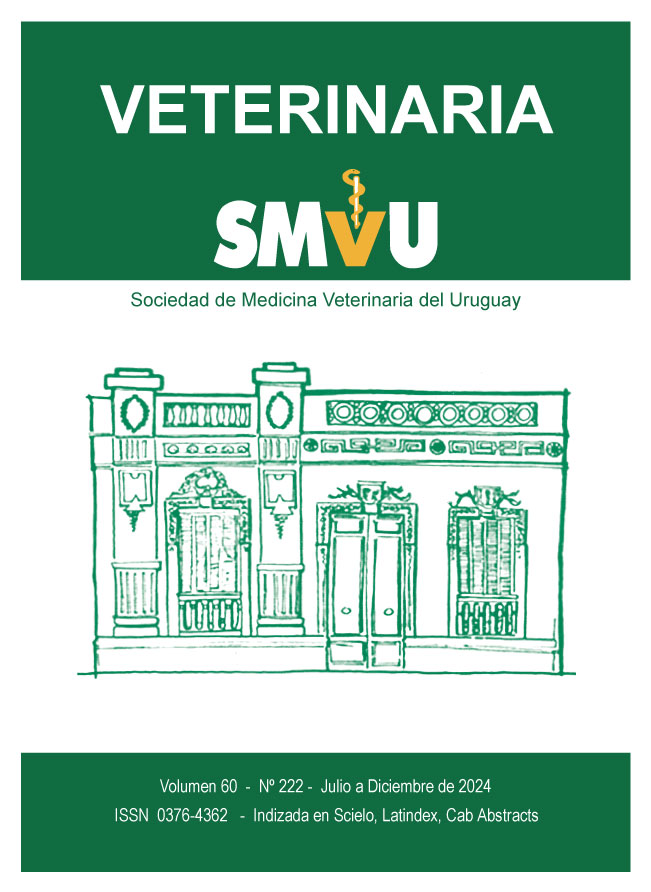Hemostatic disorders in dogs (Canis lupus familiaris) with chronic renal failure
DOI:
https://doi.org/10.29155/VET.60.222.1Keywords:
Bleeding, Anemia, Hemorrhages, ThrombopathiesAbstract
Chronic renal failure is a frequent pathology in canines, being an important cause of death in this species. The purpose of this study was to determine whether chronic renal failure (CRF) affects hemostatic parameters and blood count variables, as well as to assess whether alterations in these parameters are positively or negatively correlated with serum urea and creatinine levels. For this, 9 healthy dogs (control group) and 14 dogs with confirmed CRF were selected, in different stages of evolution according to the International Renal Interest Society (IRIS) classification. Blood was extracted for the evaluation of blood crasis, complete blood count and renal profile; the results obtained were compared between both groups and between the different evolutionary stages of CKD. Dogs with CRF presented lower Hemoglobin, mean corpuscular Hemoglobin, and mean corpuscular Hemoglobin concentration than in healthy animals (p = 0.022, p = 0.0001 and p = 0.0001, respectively), as well as a significant negative correlation between levels of creatinine and the variables of erythrocytes, hemoglobin and hematocrit. Animals with CRF presented lower prothrombin time (PT) levels, p = 0.04, and higher fibrinogen concentrations compared to the control group. A positive correlation was observed between increased buccal mucosal bleeding time (BMBT) and increased serum creatinine and urea concentrations. Although the BMBT did not differ between the healthy group and the group with CKD, it was higher in the advanced stages of this pathology, being highly correlated with serum creatinine and urea concentrations. The most notorious alterations in blood crasis parameters, as expected, were observed in patients in stages 3 and 4 of CKD, consistent with the clinical signs observed.
Downloads
Metrics
Published
How to Cite
Issue
Section
License
Copyright (c) 2024 Sociedad de Medicina Veterinaria del Uruguay

This work is licensed under a Creative Commons Attribution 4.0 International License.











